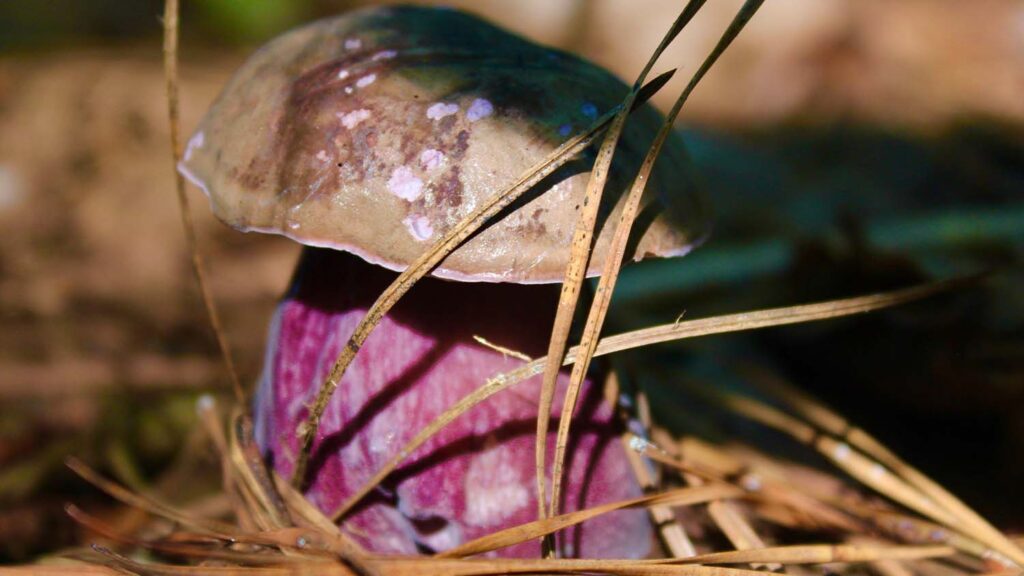Areas of Interest

The Braham Arboretum
Within Schenck Forest, you will find a variety of tree species native to North Carolina and the U.S. as well as important exotics used by the College of Natural Resources for teaching purposes.
The college conducted initial plantings from 1961 to 1964. It has since established additional trees, and today, more than 50 species representing more than 18 plant families exist within the forest.
If you would like to learn more about each species, you can scan the QR codes on the tree tags at the forest.
We also encourage you to visit the neighboring arboretum at Prairie Ridge Ecostation, which features nearly every tree species native to North Carolina and is located one mile away from Schenck Forest. It is accessible via the Raleigh Greenway System or Reedy Creek Road.
Wellness and Recreation Challenge Course
NC State Wellness and Recreation operates a high- and low-challenge course within Schenck Forest to train outdoor recreational leaders and provide team and leadership development to university groups, community organizations and corporate groups.
For more information about the challenge course, click here.
Longleaf Pine
First identified as a species in 1768, longleaf pine (Pinus palustris) is an evergreen conifer with thick, scaly bark and needle-like leaves. The species once covered an estimated 90 million acres across the Southern U.S. but now only covers a fraction of its original range — 4.3 million acres, to be exact. The reason behind this decline involves many factors, including land-use change and fire suppression.
At the entrance of Schenck Forest, the Forest Assets Team recently harvested a 17-acre tract as modified ‘shelterwood’ in order to promote the existing longleaf pine. The residual mature longleaf will continue to seed the area, with the shade providing shelter for the longleaf seedlings. The trees will also help reduce the regenerations of loblolly pine, which requires full sunlight to thrive.
The Forest Assets Team plans to periodically conduct prescribed fire to aid the growth of longleaf pine at Schenck Forest. These fires will also suppress loblolly pine and sweetgum, both of which can outcompete desirable species.
American Woodcock
The American woodcock is a nocturnal ground-nesting bird. It is the the only woodcock species native to North America, with populations along the the eastern half of the continent residing in woodlands and swamp thickets.
The Forest Assets Team has been working with Wake Audubon Society to aggressively manage for the woodcock at Schenck Forest since 2014. In the winter months, the team schedules several walks in order for classes and birders to observe the species with minimal disturbance.
Aside from its peculiar appearance — the species features large eyes near the crown of its head and a long flexible beak — the American woodcock is best known for its eccentric aerial courtship ritual. The species’ breeding season begins in late January to February and ends mid-March. During this time, the males’ courtship takes place for up to 30 minutes at twilight and dawn. The birds require openings of approximately 1/10 acre for their flight. This is where forest management proves helpful since young forests with periodic disturbance is necessary.
Male woodcock use both vocalizations and wing whirs in their courtship. The males begin with a series of “peent” calls from the ground and then take flight, reaching up to 300 feet in the air. With air rushing through the outermost primary feathers, the males produce a whistling sound with each wing flap, mimicking a bird song. They then descend in a zigzagging pattern while vocalizing a different chirping song, which is what attracts the females. The males descend at a great speed only to end with a slight lift to avoid crashing into almost the exact spot from which they took off. The females, or hens, will fly to the landing site beforehand and wait for the males. The males then court the females with a stiff-legged bobbing and bowing dance with wings stretched vertically. A male may mate with several females, while each impregnated female nests and cares for the young (a single brood per year consisting of four eggs) entirely on their own.
Picnic Shelter
Upon entering Schenck Forest via the gate on State Farm Road, within the first quarter mile, visitors will find a picnic shelter on their right. This shelter can be reserved for events. If you’re interested in making a reservation, please email the Forest Assets Team at cnr_forests@ncsu.edu. Note there is a minimum fee associated with each reservation.
NC State Forestry Club Practice Area
Established in 1958 as a founding member of the Association of Southern Forestry Clubs, the NC State Forestry Club competes in a number of annual timbersports competitions in the Southeastern U.S. The club also hosts a competition called “Rolleo” at Schenck Forest every November.
As part of these competitions, the club practices several times a week during the semester to prepare for a number of events designed to test members’ technical skills. These events include crosscut, underhand chop, log rolling, pole fell, axe throw, compass and pacing, dendrology and many other physical and technical events.
The club raises funds by selling firewood donated by local arborists. If you’re interested in purchasing firewood or learning more about timbersports, contact the club via Instagram or Facebook.
The NC State Leopold Wildlife Club may also be observed practicing with the Forestry Club at times throughout the school year.